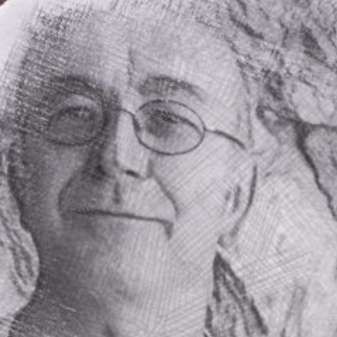There’s nothing like a festival coming to your neighbourhood to highlight gaps in local knowledge. Despite having grown up 12 miles from Dunbar, I’d never spotted, far less entered, St Anne’s Episcopal Church. It is a gem of a place with a superb chamber music acoustic. The separation and blend of instruments heard there would require a hi-fi several hundred times the price of a ticket for this live performance.
I must also confess to overlooking Hugo Wolf. His Italian Serenade is a highly infectious cocktail of grace and energy and was a fine opening choice by the Maxwell String Quartet. Intended as a three-movement work, its unstoppable energy resulted in a single movement. Within a few bars one could see and hear that this young quartet have honed a fine sense of ensemble and balance, which ensured the spring in the step essential to this piece. Violinist Gordon Bragg seemed particularly to be enjoying it, his feet seemingly itching to dance. On the strength of this performance alone, I resolved to rectify my neglect of Wolf.
Guitarist Allan Neave joined the quartet for Boccherini's Guitar Quintet no. 4, “Fandango”. Having played the version for four guitars many times, I must admit to preferring the version with strings. It throws into relief the guitar’s tonal possibilities and seems, perhaps surprisingly, more percussive. Neave chose, wisely in my view, to use amplification. For many years a purist and almost macho eschewing of audio aids resulted in poor audience experiences for guitar fans. A classical guitar simply cannot compete with a string quartet (far less an orchestra), and well chosen and managed amplification is far preferable to the desperate tone of a forced guitar. The result that was that Neave’s lovely sound provided tonal foil to the bowed strings. The finale is rightly the best-known movement. A Grave section leads to a Fandango swirling with the rhythms and harmonies of Spanish folk culture. Dynamic “rasgüeado” strumming technique, familiar to lovers of flamenco, lent great drive and also proved that a far-sighted sound-check had taken place. There are some very humorous moments in this movement, especially descending glissandi in the lower strings which brought to mind whinnying horses, no strangers to Spanish landscapes of the time.
The programme’s symmetry led us, after the interval, to the Guitar Quintet by Cuban composer Leo Brouwer. Equally at home in the atonal and aleatoric as the tonal and the folkloric, Brouwer is a favourite among guitarists. Indeed, it was only tendonitis which prematurely curtailed the performing dimension of his varied career. Of the quintet’s three movements, the opening (Allegro – più mosso) is the most harmonically adventurous. Favouring chords built on the interval of the fourth (as opposed to the more normal third) not only suits the guitar but lends an openness and mobility to the harmonic language. The guitar part leans more in the direction of soloist and Brouwer’s resonant writing ensured a high profile in tutti passages. The lovely, central Andante features far more lush harmonies and a rhythmic motif suggestive of a Strathspey from an imaginary sun-kissed Scotland. The quintet really nailed this movement. The closing Vivace emits a bluesy jauntiness thanks partly to compound time but more to the central role of the dominant seventh chord with sharpened ninth – often referred to as the “Hendrix chord”. The musicians effortlessly conveyed the feel-good factor of this movement to an appreciative audience for whom, I imagine, this would have been a first hearing.
Haydn’s String Quartet in F minor, Op. 20 no. 5 completed this balanced programme. It’s not difficult to hear why this quartet was so prized by Beethoven that he copied it out in order that he might learn from it. Rich in balancing, conversational counterpoint, this piece boasts unmistakable accomplishment. Despite its dark key it has great energy; the Menuetto could even be described as urgent. This mood, not readily associated with the normally elegant dance, was captured very well by the Maxwell String Quartet and, fulfilling Haydn’s compositional intentions, lent the following Adagio a timeless lyricism. The playing here was simply perfect. The final movement is a fugue with two subjects. By far the more familiar of these would have been the four-note motif from “And With His Stripes” from Handel’s Messiah. Presumably its conspicuous angularity, essential for fugal writing, accounts for its use by so many composers. There was nothing academic, however, about this fugue. Somehow a sense of joy overrode the minor mode’s traditional role of ensuring anything from glumness to tragedy. Several friends have recently commented that, the older they get, the more they appreciate Haydn. I’m joining that club on both counts and I shouldn’t be surprised if this excellent quartet have played their part in increasing membership.


